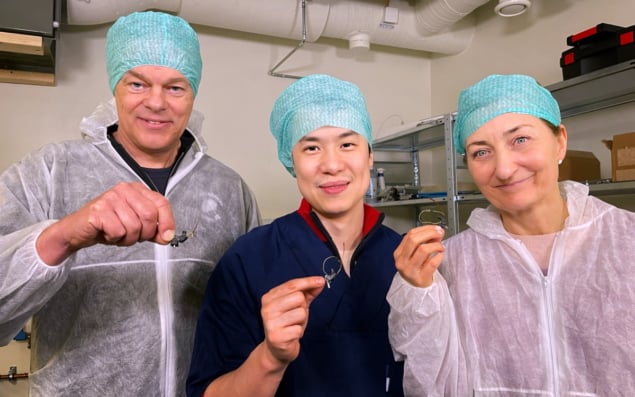
Have you ever wondered why neuroscience-related small-animal experiments have designs that constrain the subjects being studied? Or how information obtained from these studies might have been different if the subjects could behave freely and were not constrained?
You are not alone. Researchers at the Kavli Institute for Systems Neuroscience at the Norwegian University of Science and Technology have been working to remove such constraints. The team, led by neuroscientist and Nobel Laureate Edvard Moser, recently developed an open-source miniaturized two-photon microscope – Mini2P – for multiplane imaging of over 1000 neurons at a time in freely moving mice. The researchers published the details of their novel design in Cell.
“Our dream was to invent a window into the brain, so we could see what happens inside when we’re thinking, planning, feeling and remembering,” says co-author May-Britt Moser, a long-term collaborator who shared the 2014 Nobel Prize in Physiology or Medicine with Edvard Moser and John O’Keefe.
The basic working principles of Mini2P are not too different from existing two-photon light microscopes, where two photons of laser light are used to excite neurons at high resolution. However, the new design comes with two fundamental improvements.
First author Weijian Zong and his colleagues wanted to build a mini microscope that is light enough not to interfere with the animal’s natural behaviour. The previous miniscope that Zong helped to develop was heavier (roughly 5 g) and also had stiff optical fibre bundles that impeded the rodents’ natural behaviour.
Experimenting with different head-mounted microscopes that varied in both weight and the thickness of connection cables, the researchers concluded that a head-mounted miniscope with a weight of 3 g or less and a 0.7 mm cable assembly might be sufficient to help maintain naturalistic behaviour of free-foraging mice during two-photon imaging sessions.
Another innovative feature of Mini2P is its miniaturized electrically tunable lens. The researchers used a static voltage to adjust the curvature of the imaging lens. Changing the lens’s curvature triggers Mini2P to shift the focal imaging plane across multiple cortical layers in the axial direction (from the surface to deeper cell layers), thus enabling 3D imaging of labelled neurons, which fluoresce when excited with laser light.
Since Mini2P has the capability to collect significant amounts of neural data in a single recording session, and also helps reduce the number of animals used in research, the researchers decided to share Mini2P as open source with neuroscientists and labs across the world. Mini2P’s blueprint, its shopping list and instructional movies can be accessed through GitHub.
Edvard Moser is hopeful that Mini2P could also play an enlightening role in understanding brain diseases. “We know that Alzheimer’s disease cause deficits in the ability to navigate, and in memory. These are brain functions that arise from joint collaboration of thousands of brain cells. The Mini2P offers a way to monitor changes in the dynamics between thousands of cells in freely moving mice, using mouse strains that are model organisms for studying Alzheimer’s disease,” he says.



